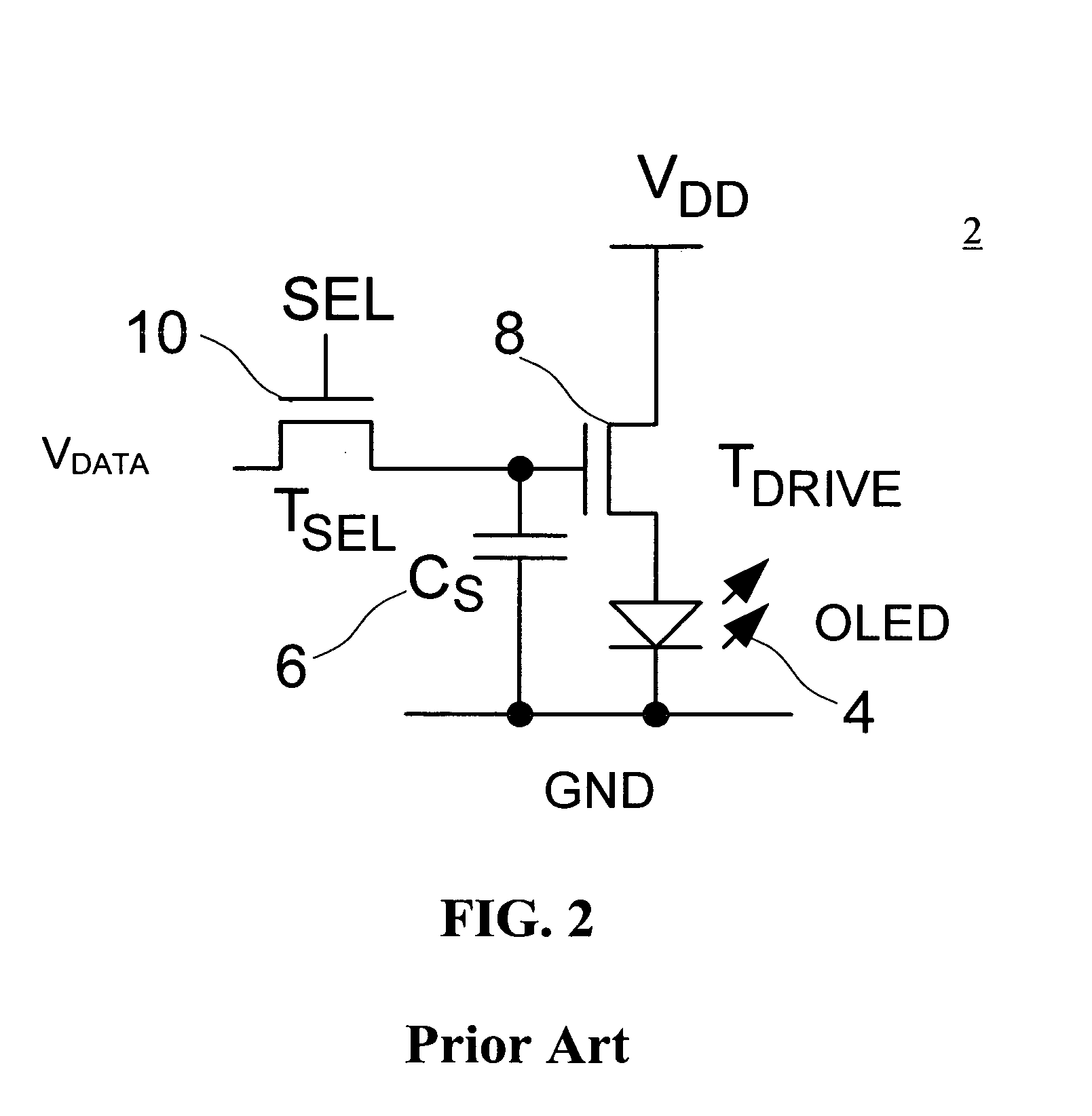Method and system for calibrating a light emitting device display
a technology of light-emitting devices and display devices, applied in the field of light-emitting device display, can solve the problems of low mobility and device instability, low-cost manufacturing of poly-silicon backplanes, and the lik
- Summary
- Abstract
- Description
- Claims
- Application Information
AI Technical Summary
Benefits of technology
Problems solved by technology
Method used
Image
Examples
Embodiment Construction
[0020] Embodiments of the present invention is described using a pixel circuit having an organic light emitting diode (OLED) and a drive thin film transistor (TFT). However, the pixel circuit described herein may include a light emitting device other than the OLED, and may include a transistor(s) other than the TFT. It is noted that in the description, “pixel circuit” and “pixel” may be used interchangeably.
[0021]FIG. 1 is a diagram showing system architecture for implementing a calibration technique in accordance with an embodiment of the present invention to a display array 20. Referring to FIG. 1, an external calibration system 100 is provided outside the display array 20. The calibration system 100 includes a switch network system for selectively implementing one of a normal display operation and a calibration operation to the display array 20, an error extraction system 50 for extracting error information related to the shift of the characteristic(s) of a pixel using a dummy r...
PUM
 Login to View More
Login to View More Abstract
Description
Claims
Application Information
 Login to View More
Login to View More - R&D
- Intellectual Property
- Life Sciences
- Materials
- Tech Scout
- Unparalleled Data Quality
- Higher Quality Content
- 60% Fewer Hallucinations
Browse by: Latest US Patents, China's latest patents, Technical Efficacy Thesaurus, Application Domain, Technology Topic, Popular Technical Reports.
© 2025 PatSnap. All rights reserved.Legal|Privacy policy|Modern Slavery Act Transparency Statement|Sitemap|About US| Contact US: help@patsnap.com



